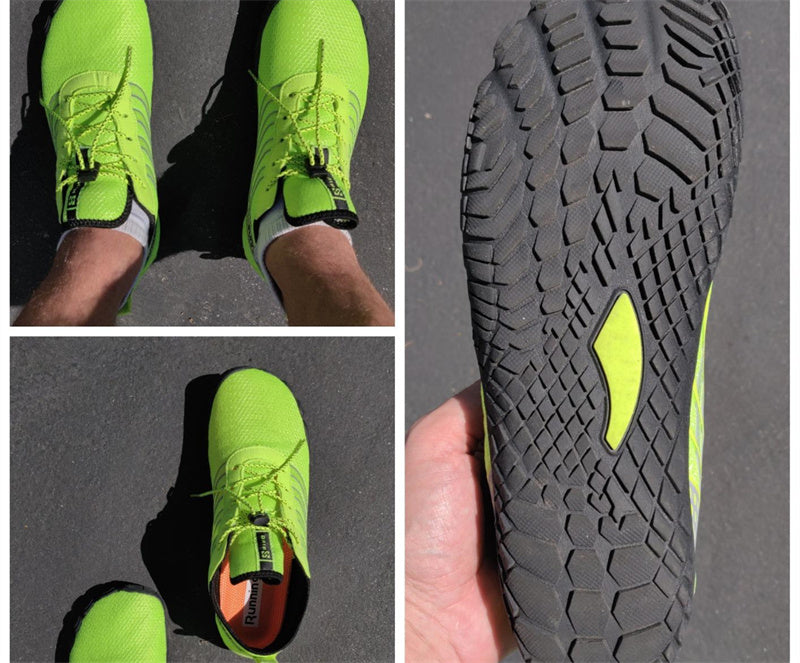- What are a water shoe and an aqua shoe?
Water shoes, also known as aqua shoes, are footwear designed for use in and around water. The first information is therefore that the 2 terms are equivalent, water shoes and aquatic shoes are are synonyms.
They generally consist of a robust sole with good grip and a fabric envelope. Their role is to protect the feet when walking on slippery surfaces, such as by the pool, and on rocks or shells in the sea.
These are "water" shoes or "aqua" in the sense that they can go in water and not in the sense that they are waterproof: your feet will get wet but they will be protected from possible abrasions and cuts. These shoes will also have a good ability to drain water outwards and a certain ability to dry quickly.
- Should I wear water shoes?
If you've come this far, you've already realized how useful water shoes can be. But if you're still not sure if you need one, let us try to convince you one more time.
If you've ever walked in or near water wearing normal shoes, you know how inconvenient and exhausting it is to walk in all that churning water. Water shoes, on the other hand, can easily shed water while providing protection for your feet.

- Can you swim with water shoes?
Yes, you can swim with water shoes.
You know how easy it is to injure your feet on the beach if you've ever stubbed your toe in flip flops or stepped on a sharper rock than it looks. Closed-toe water shoes, like regular shoes, can provide excellent protection against these hazards. However, they evacuate water much faster than normal shoes since it is a water shoe intended for this purpose.
This means you can enjoy the same level of safety while swimming as in a regular shoe. Water shoes provide great support for your foot in addition to keeping it secure.
- Are water shoes good for walking?
If you intend to cover a significant distance in your water shoes, they should be as comfortable as light hiking boots or walking sandals.Around the ankle and arch, look for good structure and support A stable fit also prevents the foot from slipping like a soap sack inside the shoe.
Also, a breathable water shoe allows air to circulate and your feet to breathe, which helps eliminate that terrible cheese smell. In particular, many water shoes resemble traditional sports shoes or sandals, making them suitable for outdoor activities as well as everyday use.
- What's the point of water shoes?
The water shoe is a category of footwear that must be worn whenever the activity is practiced in or around water, where the feet are likely to get wet. Sports such as kayaking, snorkeling, diving, canoeing, surfing, paddle boarding, water walking or coast-to-coast are totally in line with the use of water shoes. Their sole is often made of soft rubber. They are designed to offer the best possible comfort and grip, especially on wet surfaces.
But without going as far as practicing sports, the simple fact of being on the beach for a walk or swimming should be a good opportunity to wear water shoes.

- What is the difference between water shoes and water socks?
Water socks are socks that are worn inside shoes that will become waterlogged or wet. Snorkelers wore the most water socks. They wore them to prevent their snorkeling fins from rubbing against the skin of their feet. This is because constant rubbing can quickly lead to chafing and, inevitably, incredibly painful blisters.
In addition, the high water socks were created to be worn with low water shoes in order to provide additional protection. The majority of people used them to avoid jellyfish stings and other related dangers.
Water shoes, on the other hand, are footwear worn (with socks or barefoot) in wet conditions such as such as river hiking, rafting, the beach, kayaking, etc. They are ideal for water activities and activities outside the water. More importantly, water shoes are versatile pieces of equipment and that is why they are recommended for kayaking and other camping trips.
